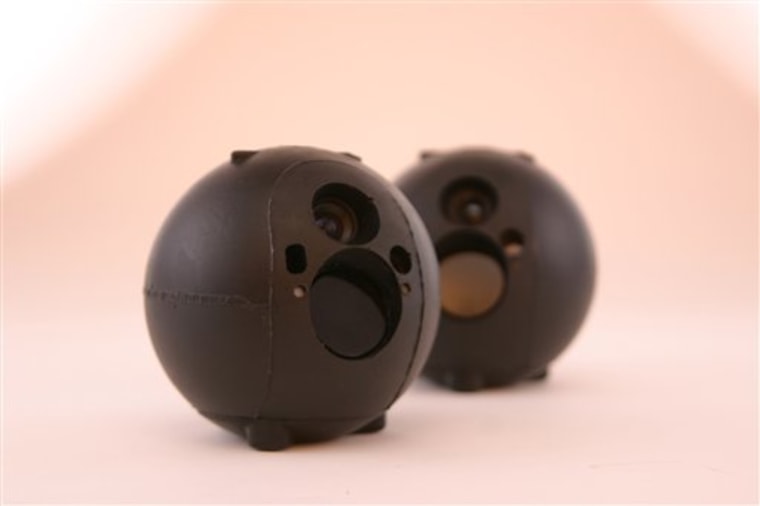Police officers stepping into hostage standoffs and other dicey situations now have something new to throw into the mix — a baseball-sized camera that can be hurled from afar, survive the landing and wirelessly relay video and audio back to base for two hours.
The EyeBall camera weighs less than a pound and is protected by a rugged rubber and polyurethane housing. That allows it to be thrown through windows or bounced off walls. When it comes to a rest, the ball stabilizes itself, then begins transmitting footage and sound up to 200 yards away.
The EyeBall is the creation of an Israeli company, ODF Optronics Ltd., which has sold the devices to the Israeli military and to undisclosed military and law enforcement customers in Asia and Europe.
Now Remington Arms Co. has won approval from the Federal Communications Commission to sell them domestically. Remington expects dozens of law enforcement groups to be buyers.
Other methods for remotely grabbing audio and video in dangerous operations often require getting close to the action, a potentially lethal step.
"What's behind a door can get you killed," said Sheriff Sam Page of Rockingham County, N.C. Page field-tested EyeBalls and determined that "it gives my guy in the field an edge."
Police can expect to pay $4,800 for two EyeBalls, whose batteries require recharging after about two hours of use, and the corresponding video monitoring equipment. Replacement EyeBalls will run about $1,700. Page said that was affordable for "even a small agency like mine."
